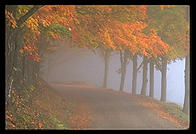
Tripod Overview
by Philip Greenspun; created 1996
Site Home : Photography : Tripod Overview
You can judge how good a bunch of photographers are by what they are talking about.
Really bad photographers debate the merits of SLR camera bodies. Somewhat better photographers debate the merits of pocketable cameras. The best photographers, though, talk tripods, tripod heads, and quick releases.
A tripod is at once a photographer's best friend and worst encumbrance. It somehow seems that one is forever lugging tripods around and adjusting them and yet never has the right one when needed. Most serious photographers own several tripods and heads.
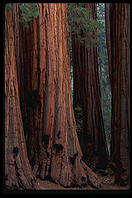 This is the least important decision
you have to make. Don't let anyone tell you that you are a girlie-man if you buy
Bogen instead of Gitzo. The fact of the matter is that if you were really
serious, you'd be using a Ries wooden tripod. "Wood absorbs vibration and metal
transmits/reflects it," is how the view camera perfectionists put it. However,
the user interface and flexibility of wood tripods is so poor that only a few
diehards are able to resist the charms of metal legsets.
This is the least important decision
you have to make. Don't let anyone tell you that you are a girlie-man if you buy
Bogen instead of Gitzo. The fact of the matter is that if you were really
serious, you'd be using a Ries wooden tripod. "Wood absorbs vibration and metal
transmits/reflects it," is how the view camera perfectionists put it. However,
the user interface and flexibility of wood tripods is so poor that only a few
diehards are able to resist the charms of metal legsets.
Make sure that whatever you get, it is tall enough that you can use it comfortably without extending the center column. Think about it: if you raise the center column, your camera is flapping around in the breeze supported by only one tube. If you push it down, you get your camera supported by three legs as advertised.
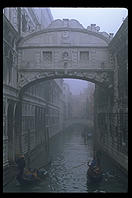 Two
companies make the vast majority of legsets used by professionals, Gitzo and
Bogen (Manfrotto outside the U.S.). Gitzo is made in France and reflects
Continental Rationalism. If you don't carefully adhere to the correct method of
loosening and tightening the leg locks, it will take you an annoying minute or
two to sort everything back out. Bogen is made in Italy by Manfrotto and reflects
Mediterranean chaos. The leg locks are marvelous little spring-loaded flick
levers (or wing-type screws on some of the smallest ones) and you can lock or
unlock them in any order. Both brands offer adjustable leg angle, which is nice
for uneven ground, slopes, and resting a leg on an overlook barrier. Both also
offer reversible center columns, for hanging the camera inches from the
ground.
Two
companies make the vast majority of legsets used by professionals, Gitzo and
Bogen (Manfrotto outside the U.S.). Gitzo is made in France and reflects
Continental Rationalism. If you don't carefully adhere to the correct method of
loosening and tightening the leg locks, it will take you an annoying minute or
two to sort everything back out. Bogen is made in Italy by Manfrotto and reflects
Mediterranean chaos. The leg locks are marvelous little spring-loaded flick
levers (or wing-type screws on some of the smallest ones) and you can lock or
unlock them in any order. Both brands offer adjustable leg angle, which is nice
for uneven ground, slopes, and resting a leg on an overlook barrier. Both also
offer reversible center columns, for hanging the camera inches from the
ground.
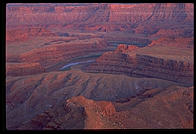 Gitzo is more
expensive but has the advantage that there are no little parts to lose or wear
out. The legs are made of heavyweight aluminum or carbon fiber. I fell in love
with Gitzo's wonderfully light (weighs 3 lbs, supports 15) carbon fiber
Mountaineer tripod ($500) during five weeks in Italy. It is dead, dead, dead.
Dead. I'm six feet tall and expected that the lack of height (52 inches or
61 with the center column up) would be annoying, but somehow I hardly noticed
bending down a bit. [An Inter-Pro Studex version is coming out in September 1996
that will be about 30% lighter than the aluminum alloy counterpart, but will rise
to the same height (61 inches or 76 inches with center column; should weigh about
4.2 lbs and sell for about $750).]
Gitzo is more
expensive but has the advantage that there are no little parts to lose or wear
out. The legs are made of heavyweight aluminum or carbon fiber. I fell in love
with Gitzo's wonderfully light (weighs 3 lbs, supports 15) carbon fiber
Mountaineer tripod ($500) during five weeks in Italy. It is dead, dead, dead.
Dead. I'm six feet tall and expected that the lack of height (52 inches or
61 with the center column up) would be annoying, but somehow I hardly noticed
bending down a bit. [An Inter-Pro Studex version is coming out in September 1996
that will be about 30% lighter than the aluminum alloy counterpart, but will rise
to the same height (61 inches or 76 inches with center column; should weigh about
4.2 lbs and sell for about $750).]
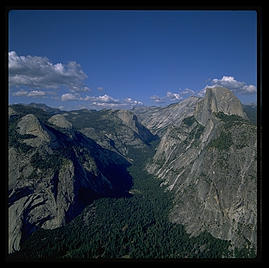 The standard Bogen legset is the 3021 ($85), which
comes with the spring-loaded flip locks. It weighs about 6 lbs, rises up to a
comfortable working height for tall people (with no center column extension), and
will support everything from heavy 35mm through lightweight 4x5. If you go into
the wilderness, plan to carry the supplied plastic wrench for adjusting the leg
locks should they loosen up. Kirk Enterprises (107
Lange Lane, Angola, IN 46703, (800) 626-5074) will modify the 3021 somehow so
that one can get even closer to the ground, but I haven't tried this. A lot of
folks prefer using a Bogen Superclamp attached to a tripod leg, with a small
ballhead at the end of the clamp.
The standard Bogen legset is the 3021 ($85), which
comes with the spring-loaded flip locks. It weighs about 6 lbs, rises up to a
comfortable working height for tall people (with no center column extension), and
will support everything from heavy 35mm through lightweight 4x5. If you go into
the wilderness, plan to carry the supplied plastic wrench for adjusting the leg
locks should they loosen up. Kirk Enterprises (107
Lange Lane, Angola, IN 46703, (800) 626-5074) will modify the 3021 somehow so
that one can get even closer to the ground, but I haven't tried this. A lot of
folks prefer using a Bogen Superclamp attached to a tripod leg, with a small
ballhead at the end of the clamp.
[If you get a Bogen, make sure you get the nifty strap that screws into the top and wraps around the legs. You might also consider paying the extra $13 to get the black anodized finish; the bright silver legs can turn into annoying reflections if you are doing close-ups of shiny objects.]
I've always liked the idea of the floppy Benbo tripods but have never been able to lock them down enough to get rigidity at a low camera angle. I think the Gitzos and Bogens have enough flexibility that Benbo need not be investigated. If you really want to do something weird, you might be better off with a Bogen Magic Arm.
If you are doing architecture, you want a three-way panhead in which each axis is separately controlled. Otherwise, you'll probably find a ballhead vastly more convenient.
With a really good ballhead, you can smoothly follow an animal with a 300/2.8 lens and take your hands off the lens without having it flop towards the ground.
Of the ballheads that I've personally used, my favorite for feel and function is the ARCA Swiss B1. This is the head that almost every serious photographer seems to end up with and my only source of sorrow is that I blew about $330 on a FOBA Superball before I found out about it. The ARCA is half the weight of the FOBA, able to support more weight, and has a very interesting patented feature: progressive resistance. That means when you've adjusted the tension for a 300/2.8 that is approximately level, the ARCA automatically increases the tensions as the lens is pointed down a bit (so that the lens doesn't flop down catastrophically). Whatever you get, if you spend $400 for a head, make sure you protect it from knocks. I wasn't super careful with my FOBA and it became useless. Sinar Bron does not stand behind the product and I would have been out of luck except that Jeff Hirsch at Fotocare in NY (see where to buy) bailed me out.
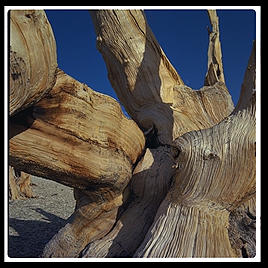 If you
really want to save money and yet not get something that is complete junk, try
the Bogen 3038 ($150 at B&H) which comes with an integral hex plate Q/R. In
fact, the quick release has a really nice locking feature that I've not seen on
other Bogen products. If you intend to leave your camera on the tripod and carry
the assemblage around for awhile, this would tend to inspire confidence. In any
case, the 3038 is about the same size and weight as the FOBA and is strong enough
to take a 4x5 or supertele. It is hard to describe why the overall experience
with the 3038 isn't as good as with the FOBA but it clearly isn't. I think it
comes down to smoothness and the use of a lubricant on the 3038, which I've
played with but never used extensively.
If you
really want to save money and yet not get something that is complete junk, try
the Bogen 3038 ($150 at B&H) which comes with an integral hex plate Q/R. In
fact, the quick release has a really nice locking feature that I've not seen on
other Bogen products. If you intend to leave your camera on the tripod and carry
the assemblage around for awhile, this would tend to inspire confidence. In any
case, the 3038 is about the same size and weight as the FOBA and is strong enough
to take a 4x5 or supertele. It is hard to describe why the overall experience
with the 3038 isn't as good as with the FOBA but it clearly isn't. I think it
comes down to smoothness and the use of a lubricant on the 3038, which I've
played with but never used extensively.
An interesting design that I haven't tried is the NPC pseudo-ballhead. This has an innovative design that locks the center of the ball rather than standard method of pushing the ball into the socket (this changes your composition slightly, somewhat irritating with a big lens especially). The head is reasonably priced ($225) and apparently well made, but allegedly is a pan/tilt head that is not really a suitable substitute for a traditional ballhead design (this is a paraphrase of some vitriolic comments by ex-users).
If you aren't planning to use a medium format camera, a super-tele, or a 4x5, you might want to investigate smaller ballheads. Even if you can afford the aforementioned heads, you won't enjoy carrying the weight. The FOBA mini super ball ($200) looks great, but I've never owned one and Sinar Bron's attitude is discouraging. I've tried the really cheap Bogen 3262QR ($40) and it works OK but the lack of tension means that you risk "dumping" the camera/lens combination. Plus, the unit seems to depend on grease for smoothness and your hands get kind of filthy if you aren't careful about where you touch your gear. I wasn't sorry when it was stolen.
All I know is that I have to have a quick release. I have to be able to mate and unmate my camera quickly or the whole tripod is too much of a hassle to use and carry.
The gold standard in quick release is the "ARCA Swiss-style". Bryan Geyer, the owner of Really Right Stuff ( http://www.reallyrightstuff.com; P.O. Box 6531, Los Osos, CA 93412, (805) 528-6321), makes the biggest selection of plates (137 in June 1995) in this style so I asked him to articulate his devotion to it. "The problem with the Sachtler, Bogen, and Linhof releases is that they have a fixed cavity size. You should be able to use a big plate for a big item like a 600/4 lens and a small plate for a small item like a body. Our plates range in size from 1.4 inches to 7.3 inches long.
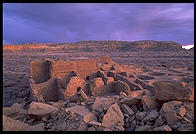 Another thing that is wrong with the
Sachtler, Bogen, and Linhof approach is that their plates are all flat-topped and
therefore free to twist or pivot on whatever equipment they are attached to. Even
if your lens lets you rotate the body without tilting the tripod head, you still
might want to shoulder the tripod and not have the plate twist. Each of our
plates has a flange of channel that keeps the lens or body from twisting.
Another thing that is wrong with the
Sachtler, Bogen, and Linhof approach is that their plates are all flat-topped and
therefore free to twist or pivot on whatever equipment they are attached to. Even
if your lens lets you rotate the body without tilting the tripod head, you still
might want to shoulder the tripod and not have the plate twist. Each of our
plates has a flange of channel that keeps the lens or body from twisting.
"A final consideration is that it is really ugly to have a big plate poking out from under your camera. ARCA Swiss-style plates conform to the size and shape of the equipment."
I used to be a Bogen hex plate user but Bryan Geyer persuaded me with his reasoning and his superbly machined products. I leave his plates on my cameras all the time and they never get in the way. I miss the positive "snap-in" that I got with the Bogen system, but not as much as I thought I would. If you want to get into the ARCA Swiss-style system you have to either buy a ballhead that comes with it or get a whole setup from Bryan.
If you want something cheap that works, Bogen sells a range of Q/R systems, the biggest of which is their old hex plate system. It is big enough to carry a 4x5 view camera with ease ($30 plus $12 for extra plates). There are a bunch of more expensive ($70-130) systems out there that look potentially better than the Bogen, but I'm not yet convinced that any are. The Linhof one looks nice. When I was looking for something lightweight, I've tried cheap systems such as the Cullman, but they are inadequately rigid.